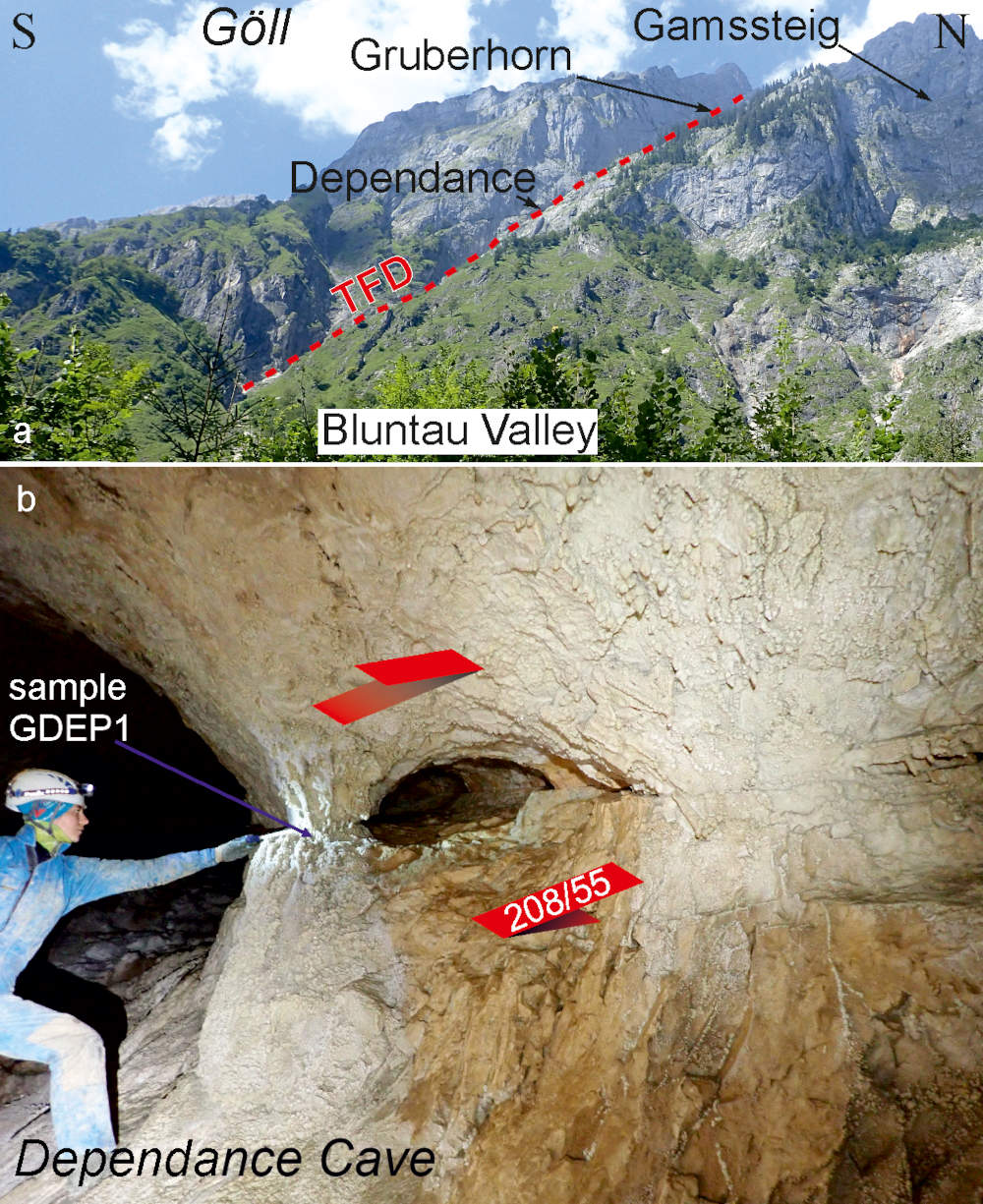Instrumental studies indicate that the northern part of the Eastern Alps exhibits minimal tectonic activity today, with deformation rates at the limit of detectability. The geological record also shows little evidence on the surface, as erosion outpaces deformation. However, in caves isolated from erosion, even centimeter-scale deformations can be preserved. The 110 km long Königssee–Lammertal–Traunsee (KLT) fault cuts through several karst massifs with deep caves, where scientists documented 26 faults displacing cave passages.
Some of the analyzed structures damaged cave speleothems, which, through 230Th/U dating, allowed researchers to determine when the displacements occurred. The results revealed three episodes of fault reactivation in the past 560,000 years, with the most recent event occurring between 130,000 and 90,000 years ago.
The study shows that the KLT fault continues to play a key role in the eastward movement of the Eastern Alpine orogen, surpassing the major SEMP fault in this regard. These findings shed new light on the dynamics of Alpine tectonic movements and the processes shaping the mountain landscape.
The research was published in the journal Lithosphere. The research was funded by NCN Sonata grant „Neotectonic evolution of the Northern Calcareous Alps determined through fault-slip analysis, radiometric dating of cave deposits, and morphology of deep karst systems”
Reference:
Szczygieł, J., Plan, L., Hellstrom, J., & Grasemann, B. (2024). Hidden Faults : The Late Pleistocene Transpression of the Königs- see – Lammertal – Traunsee Fault Inferred from Caves Deformation ( Eastern Alps ). Lithosphere, lithosphere_2024_177, 14. https://doi.org/10.2113/2024/lithosphere
Note author: JSz






